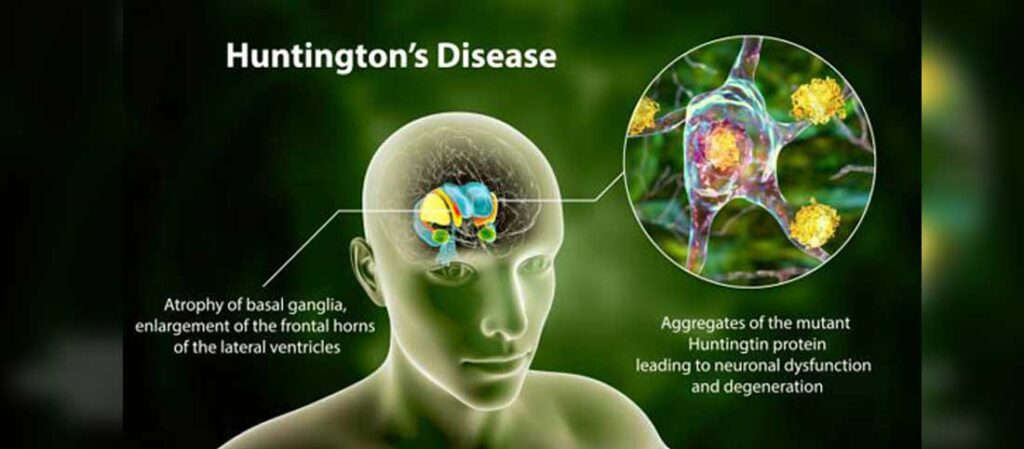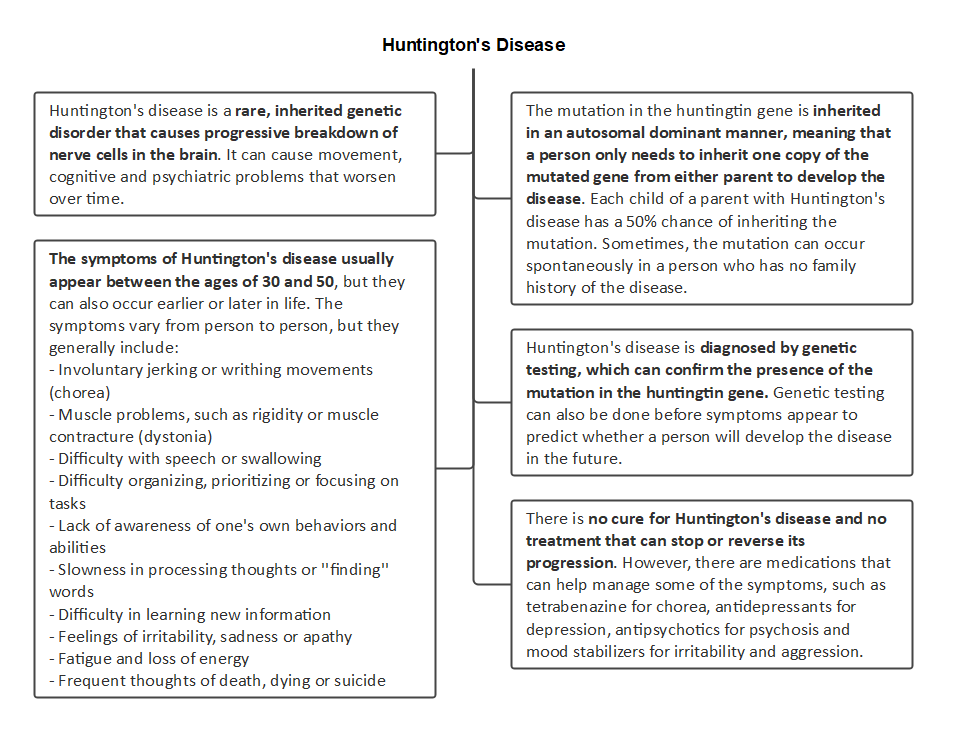Description

Copyright infringement not intended
Picture Courtesy: mayfair.com.bd
Context: A recent study published in Scientific Reports, where researchers from the University of Szeged in Hungary used fruit flies (Drosophila melanogaster) to investigate Huntington's disease at the molecular level.
Details
- Huntington's disease is a neurodegenerative disorder caused by a mutated version of the HTT gene, leading to the production of an abnormal huntingtin (Htt) protein that destroys neurons.
Huntington's Disease and HTT Gene
- Huntington's disease patients carry a mutated version of the HTT gene, which codes for the huntingtin (Htt) protein.
- The normal HTT gene contains a stretch of DNA that specifies the number of times the amino acid glutamine is repeated in the Htt protein.
- In the mutated versions of the HTT gene, this glutamine repeat stretch is expanded, leading to the production of abnormal Htt protein.
Severity and Inheritance
- The severity of Huntington's disease is linked to the number of glutamine repeats, with more repeats associated with earlier onset and increased debilitation.
- The disease is triggered even if only one copy of the HTT gene is mutated, as the mutant gene is dominant to its normal counterpart.

Polyglutamine Tracts in Proteins
- Proteins with polyglutamine tracts, including the mutated Htt protein, can cause neuronal degeneration in the brain.
- Short fragments containing polyglutamines are toxic and interfere with cellular processes.
Fruit Fly Model
- The researchers genetically engineered fruit flies to express the polyglutamine tract of the mutated human HTT gene in their nervous system.
- They used the Gal4/UAS system to selectively express the mutated Htt protein in the neurons of fruit flies.
Study Findings
- Fruit flies expressing the longer polyglutamine tract displayed symptoms resembling Huntington's disease, such as neuronal degeneration, impaired motor activity, and lower viability.
- A gene called Yod1, when overexpressed, removed the disease-like effects in the fruit flies, including neurodegeneration and motor impairments.
Significance of the Findings
- The study's findings suggest that overexpression of the Yod1 gene may have an ameliorative effect on Huntington 's-like pathogenesis in fruit flies. Further research is needed to confirm whether the overexpression of the human version of the Yod1 gene could have a similar ameliorative effect in humans with Huntington's disease.

Conclusion
- The study using fruit flies sheds light on potential molecular mechanisms involved in Huntington's disease and identifies a gene, Yod1, that may play a role in mitigating disease effects. Further research is needed to explore the applicability of these findings to human patients.
|
PRACTICE QUESTION
Q. What is the primary cause of Huntington's disease?
A) Environmental factors
B) Viral infection
C) Mutated HTT gene
D) Lack of neurotransmitters
Answer: C
Explanation: Huntington's disease is primarily caused by a mutated version of the HTT gene, which leads to the production of an abnormal huntingtin protein. The mutated huntingtin protein damages and destroys neurons in the brain, resulting in the characteristic neurodegenerative features of the disease.
|












